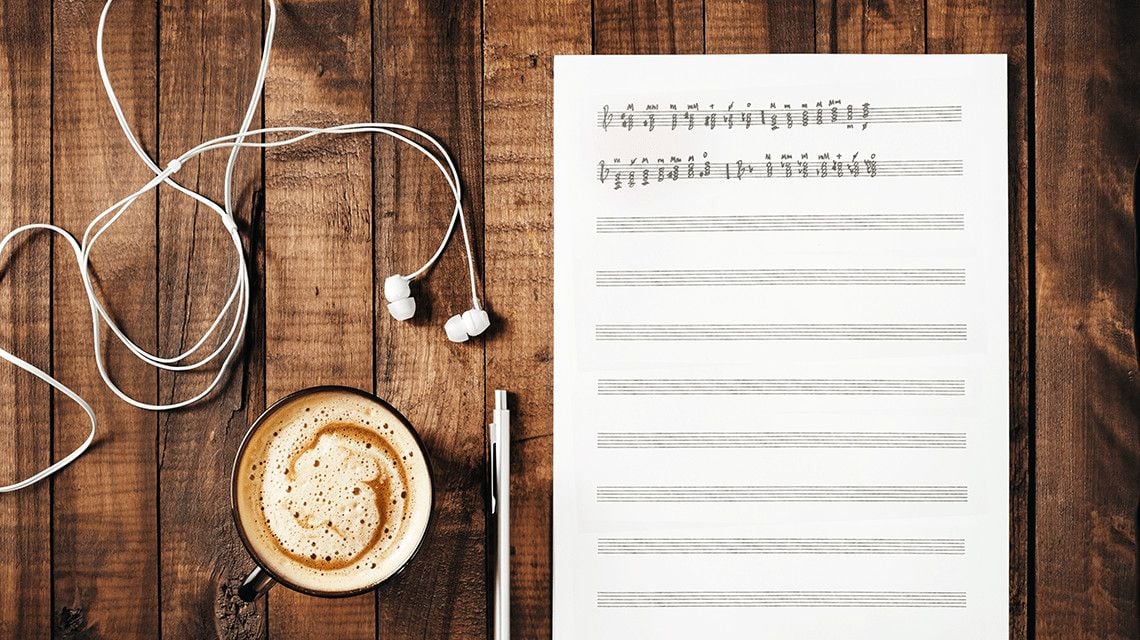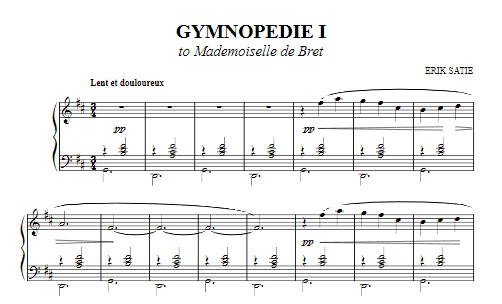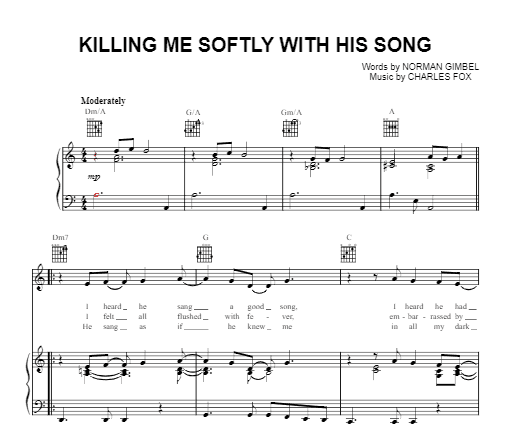Seventh Chords Explained
Learn more about seventh chords, the seven types, and the uses of each type with descriptions and images as the ultimate guide for you to master.

Seventh chords are a pillar of music theory! Made up of a triad and an added seventh above the root, these chords keep music interesting. Though they contain some extra “music theory rules,” we are here to dive into the construction of seventh chords so that you can begin recognizing them and using them in your music.
The first thing to point out is the different types of seventh chords. Just like triads can have different qualities, seventh chords can also be
-
- Major
- Minor
- Dominant (Major – Minor)
- Minor – Major
- Augmented
- Diminished
- Half Diminished
We’re going to dissect each of these types of seventh chords and discuss their purpose in music.
Major Seventh Chords
Major seventh chords are particularly beautiful as they are built with a major triad and a major seventh. In major diatonic scales, major seventh chords naturally occur on scale degrees 1 and 4. The following example shows seventh chords built on scale degrees 1-7 in C Major. The
bluechords indicate major seventh chords, pointing to both a C Major Seventh Chord and an F Major Seventh Chord.

In minor diatonic scales, major seventh chords naturally occur on scale degrees 3 and 6. The following example shows seventh chords built on scale degrees 1-7 in A Minor. Highlighted in
blueare a C Major Seventh Chord and an F Major Seventh Chord.

Pleasing to the ear, these chords have found their way into many famous pieces of music. Erik Satie, in particular, alternates between a G Major Seventh Chord and a D Major Seventh Chord in his world-renowned Gymnopédie No. 1.

Examples of Major Seventh Chords
Major seventh chords are commonly heard in jazz music of the 1920s and they continue to appear in jazz-influenced compositions of the late 20th century, including traditional pop music, easy listening music, and bossa nova. The major seventh was a primary tonic in all styles of music from the 1970s on, with prominence in country, disco, funk, rock, and soul music.
Minor Seventh Chords
Minor seventh chords consist of a minor seventh on top of a minor triad. In a natural minor scale, these chords are found on scale degrees 1, 4, and 5. The following example shows naturally occurring minor seventh (highlighted in
blue) chords in the key of E Minor.

In a major diatonic scale, minor seventh chords naturally occur on scale degrees 2, 3, and 6. The following example shows naturally occurring minor seventh chords (highlighted in
blue) in the key of G Major.

Minor seventh chords add an impressive amount of depth to minor triads and can be used to both darken and brighten chord progressions. A beautiful example of this chord being used in popular music can be found in Roberta Flack‘s “Killing Me Softly.”

Uses of Minor Seventh
Minor seventh intervals are rarely used in popular melodies, and are almost never found in the openings of songs. However, one well-known example that is referenced frequently in music theory classes is in the opening phrase of the song “Somewhere” from West Side Story. You can clearly hear the minor seventh interval in between the initial two words of “There’s a place for us.” A second popular example is in the first two notes of the theme song from Star Trek: The Original Series.
Dominant Seventh Chords
Dominant seventh chords can also be referred to as major-minor seventh chords because they are made up of a major triad and a minor seventh. Of all the seventh chords, this chord is perhaps the most important. It was the first seventh chord to appear regularly in classical music! The name comes from the fact that it occurs naturally in the seventh chord built upon the dominant (fifth scale degree) of a given major diatonic scale.
E Major Scale

B Dominant Seventh Chord (in the key of E Major)

The function of the dominant seventh chord is to drive to (or resolve to) the tonic note or chord. When you hear this chord sounding, your ears will probably beg for a resolution! This chord is often referred to as a “strong” chord because of its compelling nature. Also, it is commonly used as the dominant chord (the chord built on scale degree 5) in many minor keys. In harmonic minor scales, it is naturally occurring due to the raised seventh scale degree.
A harmonic minor scale is a natural minor scale with a raised seventh scale degree (both ascending and descending).
Uses of the Dominant Seventh
The sound associated with a dominant seventh chord is one of dissonance, or tension, with a mix of the bright tones of a major chord and the more foreboding, dark tones of a minor chord. Dominant seventh chords can be found as an integral piece of popular songs in many genres of music, starting with the early days of rock and R&B music. Legends such as Elvis and the Beatles relied heavily on the dominant seventh to create their runaway hits, including “Heartbreak Hotel” and “I Saw Her Standing There” which both relied on the A7, B7, and E7 chords.
Minor-Major Seventh Chords
The minor-major seventh chord has been nicknamed “The Hitchcock Chord” due to Bernard Hermann‘s use of it in the critically acclaimed film Psycho. It consists of a minor triad with a major seventh and can be naturally found on the tonic scale degree in a harmonic minor scales.
D Harmonic Minor Scale

D Minor-Major Seventh Chord

As you can probably guess, the minor-major seventh chord has a particularly eerie sound and fits perfectly into harmonic minor keys. Try playing around with inversions for even clashier combinations!
Uses of Minor-Major Seventh Chords
This chord is found often in classical music, particularly in the late Romantic period. While the use of it in the Classical and Baroque periods is less common, a notable example can be found in the last bar of St. Matthew Passion by Bach. It is also found often in operatic music and jazz. Guitarists use this chord, which results in a Moorish feel, for creating atmosphere. The chord is rarely used in rock or popular music.
Augmented Seventh Chords
An augmented seventh chord is a dominant seventh chord with a raised fifth. It can also be described as an augmented triad with a minor seventh. It occurs naturally in a whole tone scale, which is a scale in which a whole tone separates each note.
C Whole Tone Scale

If we build a seventh chord with this scale starting on “C,” we will get that funky sounding augmented seventh chord! Keep in mind that A-sharp and B-flat are enharmonically related (same pitch written in different notation).
C Augmented Seventh Chord

Diminished Seventh Chords
The easiest way to think of diminished seventh chords is to think of them as four notes all stacked in intervals of minor thirds. Let’s build a diminished chord starting on D. Notice how each note added is a minor third up from the previous note.

You can also think of diminished seventh chords as diminished triads with an added diminished seventh. These chords are naturally found on scale degree seven in a harmonic minor scale.
G Minor Harmonic Scale

Similar to the dominant seventh chord, the leading tone (raised scale degree seven) in the diminished seventh chord strongly indicates a drive to the tonic. However, this chord is can also be used as an interesting passing chord, especially in jazz music.
Half Diminished Seventh Chords
Half-diminished chords can only occur as seventh chords because of their structure as a diminished triad paired with a minor seventh. Half-diminished chords are also regularly referred to as minor-seventh-flat-five chords, particularly by guitarists. These chords occur naturally on the seventh scale degree of a major scale, and on the second scale degree of a natural minor scale.
B Half-Diminished Seventh Chord (in the key of C Major)

D Half-Diminished Seventh Chord (in the key of C Minor)

Though half-diminished chords can function in a variety of ways, they are most commonly used as a predominant functioning chord in minor keys. Half-diminished chords built on scale degree 2 (many times in an inversion) create a very pleasing sound as they move to a dominant chord.
We hope that you now have a better understanding of seventh chords and how to use them. Spend some time writing out different types of seventh chords in different key signatures, and soon enough you’ll be an expert! To learn all of the symbols that accompany these chords (as well as many others), check out our Complete Guide to Chord Symbols in Music. And if any of the terminology used in this article left you with questions, check out our complete Glossary of Musical Terms. Stay musical!

